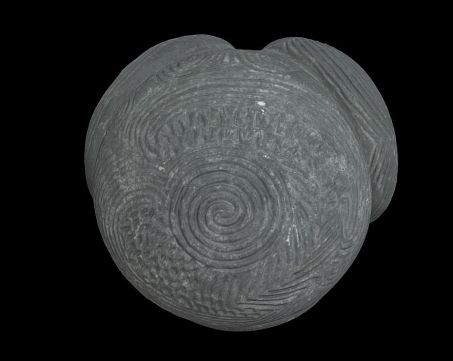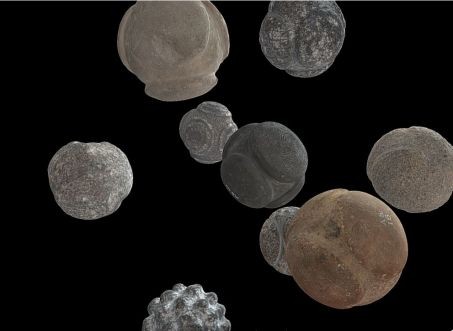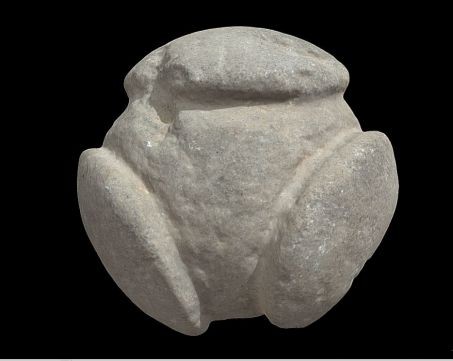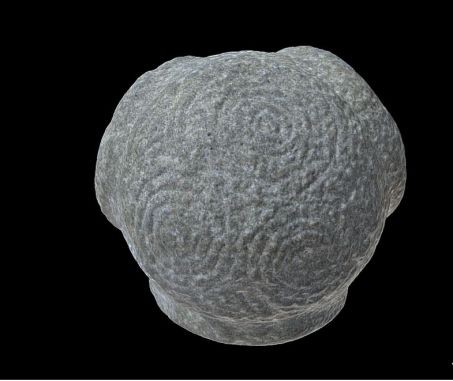These at least 5000 year old spheres have puzzled scientists for many years.
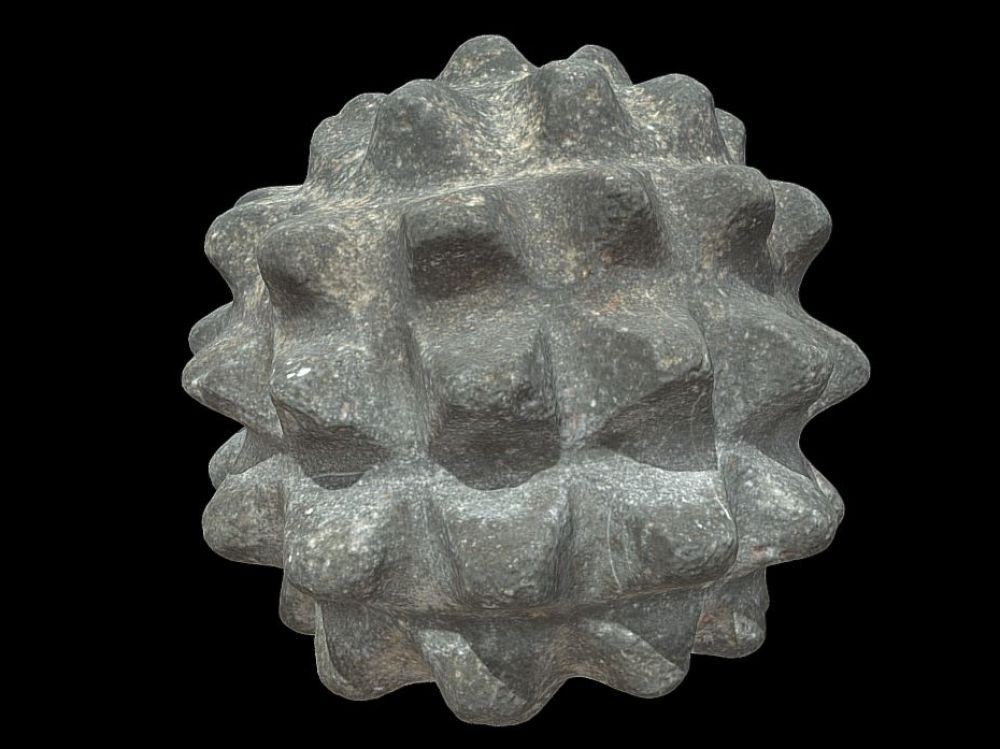
Copy of a "Scottish stone ball". More than 500 of them, all different, have been discovered since the 18 th century.
Exceptionally discovered in an archaeological context, two polished stone spheres, these mysterious globes shaped more than 5000 years ago in Great Britain were found in August 2021 in a burial near the beach of Tresness, on the island of Sanday, in the Orkney Islands, at the northernmost tip of Scotland. In 2018, Sciences et Avenir had already returned to these enigmatic Neolithic productions encountered mainly in these regions, but also in a few cases, in England, Ireland and Norway. Considered for a time as possible weapons, the majority of archaeologists agree today that "these objects had complex biographies over a long time ". As we already mentioned in our article, "the rare stones encountered in an archaeological context, that is to say in undisturbed environments, have been found near cistus (chests), cairns or tumuli, therefore in connection with the funerary world" . What this latest finding confirms.
Scotland is an unusual country! And not just for its lochs, windswept russet moors or 'haunted' castles. To this list of curiosities, we must add the enigmatic 5000-year-old stone balls that have been discovered there since the 18 th century and that a researcher has been modeling for a few months to make them accessible.
An example of a sphere from Scotland. © National Museums Scotland
Carefully engraved with discs and delicate circles, elaborate spirals, bristling with buttons, or chiseled with chevrons, these Neolithic spheres (3200-2500 BC) appeal to European prehistorians. “No one has yet managed to discover the secret of their functions” , explains Hugo Anderson-Whymark, curator at the National Museum of Scotland (Edinburgh), behind their modelling, joined by Sciences et Avenir. “Of the 525 stone balls saved in museums [especially that of Edinburgh, Ed] and private collections, the majority was collected on Scottish soil, a few in England, others in Ireland and only one in Norway “, continues the specialist. “Since June 2018, I have decided to model around sixty of them in 3D, which can be found on our Sckechfab website. Their volumes are remarkably uniform ( 70 mm in diameter for the majority and 112 for 12 specimens),with decorations of perfect symmetry.”
These 3D models were made from photogrammetric surveys. The high resolution allowed to reveal unknown details. © National Museums Scotland
From the Orkney Islands (Orkneys) to Angus, from the Aberdeen region to the famous site of Skara Brae where some of them were found, these stones were cut from the most diverse materials. From the hardest, like granite, to diorite, serpentine (greenstone), quartzite, basalt or sandstone easier to work with. The craftsmanship required to make these objects was considerable. Suggesting that these objects played a prestigious role.
Stones whose use remains unknown
Which? Modeling revealed previously unseen details. “It has long been postulated that they could be weapons — mounted like the heads of clubs or bound together by tendons, to be used like South American bolas [throwing weapons comprising several linked spheres, Editor's note], recalls Hugo Anderson-Whymark. But the 3D modeling revealed fine traces of tools and ornaments that are difficult to see with the naked eye, which opens up new perspectives. as to the meaning that these productions of the past could have had. They seem to have changed over time. In some cases, the curve of the buttons has been modified, in others, these bulbs have been subdivided or decorated.”
Sphere called "Water of Leith". © National Museum Scotland
“These transformations demonstrate that these artifacts had complex biographies over a long time”, believes the prehistorian, for whom these stones could have passed from hand to hand, and from generation to generation, taking on stories as they passed. “It is clear to me that these objects were of great importance within Neolithic communities .” Did they hold symbolic power?
The rare stones encountered in an archaeological context, that is to say in undisturbed levels, have been near cists (chests), cairns or tumuli , therefore in connection with the funerary world. Some scrollwork decorations are also absolutely similar to those found on decorated blocks of New Grange *, in Ireland (see sidebar ).
Stone called "Lampahan" and its spiral decorations. © National Museum of Scotland
Were the spheres of Scotland associated with clans? Impossible to say for now. “But given all these assumptions, it's easy to see why these artifacts have continued to capture the imagination for more than two centuries”, smiled Hugo Anderson-Whyman.
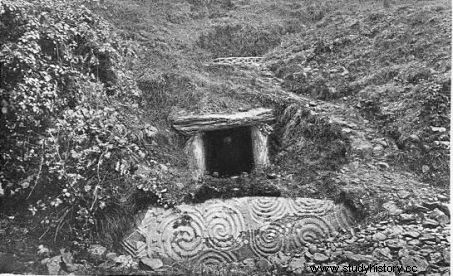
Ornate blocks from New Grange, Ireland, 19th th century. © Archives / National Museums Scotland
Similar details at the New Grange site in Ireland
Built around 3200 BC, almost 600 years before the Great Pyramid of Giza in Egypt and 1000 years before Stonehenge (England), the famous New Grange burial mound, north of Dublin, Ireland, is a mortuary chamber, surrounded by monumental blocks incised with spirals and triskelion . Details identical to those found on certain spheres in Scotland.

